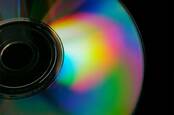This article is more than 1 year old
The iMac at 22: How the computer 'too odd to succeed' changed everything ... for Apple, at least
Very '90s kit was everywhere – and it saved Apple's ass too
On this day in 1998, Steve Jobs took to the stage of the Moscone Center in San Francisco for a product launch that would indelibly change the face of computing and arguably save the firm he founded almost 22 years earlier.
The machine showcased at the MacWorld event was the iMac G3. It was, to put it gently, uncharacteristic for the era. As the wider industry churned out unremarkable beige boxes and towers, the iMac was colourful. Playful, even.
The chassis was partially constructed out of a translucent plastic, and came in 13 different hues, with names like "Bondi Blue" and "Flower Power". It ditched the customary right angles for a curved design that enveloped the 15-inch display. And while rival machines were pockmarked with a dizzying array of serial ports, the iMac G3 kept things, er, minimal with just two USB ports.
"The back of this thing looks better than the front of the other guys," remarked Jobs to a room full of laughter. "It looks like it's from another planet – a good planet. A planet with better designers."
And that was the point of the iMac G3. It emerged at a point when computing had ceased to be the preserve of businesses and hobbyists, becoming a staple facet of everyday life. So why shouldn't it look good?
Of course, there were detractors. Writing for The Boston Globe, Hiawatha Bray described the iMac G3 as "too odd to succeed" and Apple as "a computer company on the cutting edge of irrelevance". Apple, Bray said, hadn't "lost its knack for the irrational" and predicted the iMac would "only sell to the true believers, and not as many of them as you might think".
A huge point of contention was the absence of the 3.5-inch floppy drive, which remained a staple of the PC world until the early 2000s, and was described by Bray as "an astonishing lapse from Jobs, who should have learned better".
But what ultimately defined the iMac was its wholehearted embrace of the internet, which was swiftly going mainstream. The iMac G3 deliberately embodied that trend, with the "i" standing for internet (as well as "individual", "instruct", "inform" and "inspire" but not "idiot").
The iMac G3 had a 56.6Kbps modem, and packed 10/100 BASE-T Ethernet, which made it simpler for education customers to network. At that point, the US education system was one of Apple's most faithful bases, with Cupertino dominating the market until late 1999, thanks to its strategy of selling cheaper machines. In many respects, the iMac G3 was as much aimed at schools as it was home users.
While the G3 trod new ground in industrial design, it's also significant for saving Apple. In the mid-1990s, Apple was the sick man of the computing world, haemorrhaging money and customers. It sold a dizzying array of products, many of which were dismal failures, like the Newton and the Bandai Pippin games console.
Worse, Apple had effectively devalued the Macintosh by allowing third parties to license the Mac OS 7 and Mac OS 8 operating systems. Many of these "clones" were more powerful than official Macintosh computers, yet sold at a fraction of the price.
In the financial year ending 26 September 1997 [PDF], Apple lost $1bn. The very existence of the company was in doubt, prompting Dell CEO Michael Dell to say that if he was in charge of Apple he'd "shut it down and give the money back to the shareholders". It's a quote that will forever live in infamy, not least because Apple eclipsed Dell's market value from 2006 onwards.
But thanks to products like the iMac G3, which sold nearly 280,000 units in the six weeks after its launch, and aggressive product rationalisation decisions from Jobs, Apple returned to profitability in 1998, with earnings of over $300m.
And the rest, they say, is history. ®

